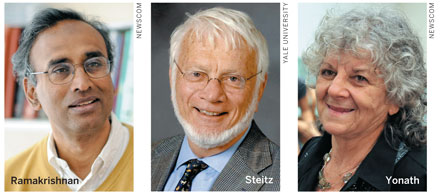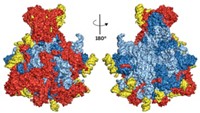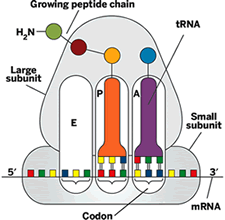Advertisement
Grab your lab coat. Let's get started
Welcome!
Welcome!
Create an account below to get 6 C&EN articles per month, receive newsletters and more - all free.
It seems this is your first time logging in online. Please enter the following information to continue.
As an ACS member you automatically get access to this site. All we need is few more details to create your reading experience.
Not you? Sign in with a different account.
Not you? Sign in with a different account.
ERROR 1
ERROR 1
ERROR 2
ERROR 2
ERROR 2
ERROR 2
ERROR 2
Password and Confirm password must match.
If you have an ACS member number, please enter it here so we can link this account to your membership. (optional)
ERROR 2
ACS values your privacy. By submitting your information, you are gaining access to C&EN and subscribing to our weekly newsletter. We use the information you provide to make your reading experience better, and we will never sell your data to third party members.
ACS News
Nobel laureate Thomas A. Steitz dies at 78
Crystallographer mapped the structure of the protein translation machinery inside cells
by Celia Arnaud
October 16, 2018
| A version of this story appeared in
Volume 96, Issue 42
Thomas A. Steitz, Sterling Professor of Molecular Biophysics and Biochemistry at Yale University, died Oct. 9 of pancreatic cancer at the age of 78. He shared the 2009 Nobel Prize in Chemistry for his work elucidating the structure and function of the ribosome.
The ribosome is a large biomolecular machine responsible for translating messenger RNA into proteins by assembling and stitching together amino acids. Made up of RNA and proteins, the ribosome is organized into two subunits. Steitz and coworkers used X-ray crystallography to solve the first structures of the so-called large subunit. This structure is the target of many clinically significant antibiotics, and its elucidation has added to our understanding of how these drugs work. Venkatraman Ramakrishnan of MRC Laboratory of Molecular Biology and Ada E. Yonath of Weizmann Institute of Science, who shared the 2009 Chemistry Nobel with Steitz, solved structures of the ribosome’s small subunit.
Steitz spent much of his career focused on the molecules involved in gene expression. Before studying the ribosome, he solved the structures of several other complexes involved in the pathway, such as a DNA polymerase and a complex between transfer RNA and the enzyme that adds amino acids to it. The tRNA then brings these amino acids to the ribosome.
“While he got the Nobel Prize for his contribution to getting the structure of the ribosome solved, he had about a half-dozen other accomplishments that are almost as interesting and as important,” longtime collaborator and Yale chemistry professor Peter B. Moore says. “Most of us are lucky if we do one or two things in an entire career that people remember.” Steitz was “always ready to move on to a new project where he thought the payoff in terms of the gain of information per unit expended was going to be greater.”
Alanna Schepartz, another colleague at Yale, says, “Tom Steitz was an unquestionably legendary scientist, but what I remember most was his bravery. No scientific challenge was too great. I found that quality truly inspirational.”
Steitz was born in Milwaukee in 1940. He received his bachelor’s degree from Lawrence College, in Appleton, Wis., in 1962, and his Ph.D. in molecular biology and biochemistry from Harvard University in 1966. He completed postdoctoral fellowships at Harvard and the MRC Laboratory of Molecular Biology before joining the Yale faculty in 1970.
He is survived by his wife Joan A. Steitz, also Sterling Professor of Molecular Biophysics and Biochemistry at Yale, their son Jon Steitz, and two grandchildren.





Join the conversation
Contact the reporter
Submit a Letter to the Editor for publication
Engage with us on Twitter